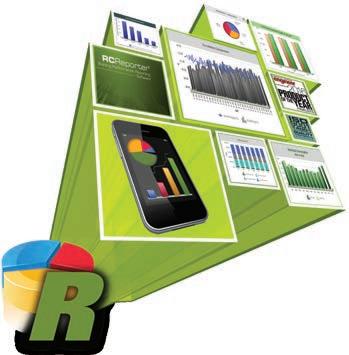
10 minute read
In the spotlight – Stephanie Donnelly

The photo was taken at Groot Constantia in Cape Town (one of the first wineries in South Africa). I grew up about 3km from the winery and spent a lot of time there growing up. We took the family to South Africa a few years ago and went to Groot Constantia on a very wet and miserable day. Immediately after a lovely lunch we got into the car to drive to an old friend’s house. We were relying on Google maps, As we were driving, the area was getting dodgier and dodgier and as we pulled up outside the address in Google Maps 20 mins later we realised that we could not be in the right place. We quickly high tailed it out of there and realised that my friend lived a 4 min drive away from the winery we were at, in a very lovely estate with their own security guard and gate!
Let’s hear your elevator pitch Stephanie to set the scene for our readers:
I’m Stephanie Donnelly and am AECOM’s practice director for building services in Australia and New Zealand. Last year we made a conscious decision to operate as national practice and my role across the building services practice is to make sure we have teams with the best experience delivery quality projects for our clients.
Let’s start with your background.
Many people assume by my accent that I was born here in Australia. I was born in South Africa, my dad is Hungarian and my Mum is from the very strong German community in South Africa. I grew up in a multi lingual household in a multilingual country before moving to Australia with my family when I was 15.
So Steph What inspired you to become a building services engineer and what path did you take to achieve this?
I honestly did not know where I would land once I
In the Spotlight... STEPHANIE DONNELLY

graduated. I knew I did not want to end up on a mining site or permanently on a construction site. When I applied for the job as a graduate mechanical engineer at Bassett and I found out it was a mostly office based job in the city, I knew this was the job for me. I spend a few years learning various aspects of mechanical services design with Bassett and then Bassett became part of AECOM. This opened the door to be involved in a variety of different projects with a wide range of different professionals at AECOM. I have enjoyed this aspect of my career the most, learning about what my colleagues do, how their point of view can challenge and improve my work and deliver great project outcomes. For a while I did not do any building services design work, rather I project managed teams of civil engineers who were undertaking site infrastructure assessments. This project really improved my project management capabilities and helped me deliver in my current role.
How did you get into the industry? who was your mentor and what was that like?
So you asking me to show my age? The office I started in was a cubicle farm with CRT monitors (at least we all had a computer) on all our desks. You couldn’t see over the partitions, but you could clearly hear the conversations from the cubicle next door.
I am lucky enough to still work with quite a few people who were with me at the start of my journey. I can’t choose one mentor from this group, rather I feel that at different times in my career each of them has supported me in different ways.
Are there any particular moments of being mentored that you recall are game changers for your career? You might want to recall a funny moment or nice
moment….
Very early on, one of the principals walked past my desk and started quizzing me about psychometrics. It very quickly become clear to me (and him) that I had no idea. He told me that I would have a quiz the next day to test my knowledge. I studied very hard that night! Fortunately, there was no quiz the next day and I to this day very good at psychometrics!
How long have you been at AECOM how did you get into your current role?
17 years, starting with Bassett, who then merged with AECOM. In my previous role as Team Leader - ACT, it was pretty clear that we needed someone to take ownership of building services to drive collaboration and consistency across ANZ. In mid 2018, we had a change in leadership and I was excited to hear that our new End Market Director was looking for someone to do just that. I put up my hand and got the job.
Have you had to overcome any barriers in your career?
I am grateful that I enjoy my job and have had very supportive managers and colleagues in my career. This has helped me overcome the many barriers, both small and large, that were put in my way. They have always made me feel valued and respected.
I have had older colleagues tell me they don’t think women could be an engineer, I often get asked for a tea or coffee in a meeting full of men, even when I am often the most senior person in the room, I have been paid less than an equally experienced male colleague (this was fixed when I pointed it out).
What are some of the most enjoyable aspects of your job? What do you love about your job? If you could go back in time, what advice would you give your younger self and would you do it all over again?
Working with a team of people to apply our technical knowledge and experience to helping our clients deliver a project / fix a problem / improve outcomes for our community. It is all about the journey you go on, defining the problem and them solving it.
What are some of the key challenges that come with the job?
In my current role I don’t have any direct reports and have to get things done through my relationships with my team. Leading through influence is challenging, I have to work at staying connected to a team than spans Australia and New Zealand. I schedule time, both one on one and as a team, to regularly catch up via video chat with the key people in my team. Sometimes, there is very little to discuss, sometimes there is a lot. I feel these regular conversation build trust between myself and the team.
You’ve just become Chartered or on the road to chartership, why now and what advice would you give to our readers who are considering it might be too late to apply in the career?
Becoming chartered has been one of my goals for about 10 years, which I finally achieve in March this year. I decided it was time for three reasons; I felt as Practice Director I should be recognised by my professional body, I wanted to lead by example as I am asking many of our team to consider being chartered or registered, and lastly, because EA has recently updated their application procedure making it easier for those with more experience to apply.
It is never too late to apply, and it is becoming increasingly more important if you want to continue to practice as an engineer. As our states and territories move towards a system which requires registration of its engineers, becoming chartered is one of the pathways that you can demonstrate your competence to practice. Life is a marathon, not a sprint. Take the time to enjoy your work and your life. You can never go back in time.
What one piece of advice would you give to someone thinking about becoming a building services engineer?
I love watching how buildings are dynamically changing as they are designed to meet client expectations, the safety and amenity of people and the architects vision. If you love the challenge of adapting to change, this is the industry for you.
Building services is great because….?
Great buildings services design is invisible, creating places for people to comfortably be. You will not yet for the beauty or creativity of your work, but you will know that you make people safe, happy and comfortable in the buildings you design.
Tell us something not a lot of people know about you? Something fun or an unusual hobby, etc.
I play soccer, not very well but I love the friendly competition and the friendships you make in the team.
I also love crafts, any craft that involves making something, think origami, knitting, sewing, you name it, I have done it. I recently rediscovered my love for folding boxes when making Easter baskets for my nieces and nephews. I also found my knitting needles and some spare wool the other day. I am now wondering what I will do with these.
Public Buildings
Occupants and assets in public buildings including transport hubs, centres of education, art galleries, museums and hospitals, are sensitive to airborne contaminants, not just particulate matter but also those that are manifested in the gaseous form and are hazardous. Whether these occupants are students, visitors passing through or staff employed to provide services to visitors as well as maintain and operate equipment and protect assets.
Vehicular traffic, be it nearby road traffic, helicopters transferring hospital patients, aircraft and railway locomotives, emit poisonous fumes as a bi product of fuel combustion. Protection for people, along with electronic equipment, museum artefacts and ancient documents, are sensitive to the carcinogenic, acidic, corrosive nature of these compounds.
Selection of the correct activated media, be it in form of carbon granules or chemically impregnated gas phase media, AFPRO products are formulated to address individual applications and use sophisticated monitoring tools and services to ensure maximum performance and service life is achieved.
In order to maximise the effectiveness of the gas phase or chemical media, or for that matter, any downstream filtration system, particularly for a hospital or pharma production facility HEPA filters, it is critical that particulate contamination is effectively addressed, by selection of pre filters that are rated ePM 1 to ISO 16890, this will ensure the chemical media sustains contact with the gases and that HEPA filters remain clean and therefore place a lower energy impact on the HVAC system.

In order to maximise the effectiveness of the gas phase or chemical media, or for that matter, any downstream filtration system, particularly for a hospital or pharma production facility HEPA filters, it is critical that particulate contamination is effectively addressed, by selection of pre filters that are rated ePM1 to ISO 16890, this will ensure the chemical media sustains contact with the gases and that HEPA filters remain clean and therefore place a lower energy impact on the HVAC system.
Reliable Controls release RC-REPORTER 3.7
Take your building performance reporting to a new level with RC-Reporter 3.7.
RC-Reporter performance reporting software allows you to extract intelligence from your building data and discover actionable insights to improve your operational efficiency. Identify, evaluate, and rank energy wise and comfort-balancing opportunities to support your continuous optimization strategy. RC-Reporter brings clarity to building performance analytics with readable, reliable, rational reports, delivered automatically by email or integrated directly into your building control system.
Jason Duncan Reliable Controls Australasia Regional Sales Manager says “Everyone is talking about the power of data and a lot of people are not quite sure how to unleash that power, RC-Reporter solves that problem”
RC-REPORTER OFFERS FLEXIBLE REPORT GENERATION
• Build custom reports quickly by selecting and configuring report components. • Select multiple ranges of time-series data from multiple databases. • Configure report charts to be displayed in browser interface. • Run simple and complex queries to refine data used in report components. • Apply standard math functions to data. • S tore saved reports securely on the RC-Reporter server. • Easily export reports to and import reports from other
RC-Reporter installations. • Export reports in PDF format.
https://www.youtube.com/watch?v=BBtXq2K7iBQ&vl=en
https://www.reliablecontrols.com/corporate/sustainability/











